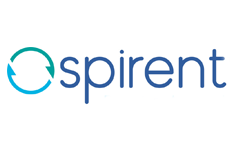
The Future of 400G Transport Testing Starts with VisionWorks
By:Josué Galán
July 10, 2023 · 3 min read
As organizations roll out 400G - especially in preparation for line-rate 400 Gbps services, high-density mobile backhaul, and other new applications - they’re running into gaps in testing capabilities.
Which applications will dominate tomorrow's 5G, cloud, and data center transport networks? Augmented reality? Generative AI? Industrial automation? The answer may be “all of the above,”or even something entirely new. But we can make one prediction with onfidence: whatever new experiences customers demand, service providers and cloud providers will need faster speeds and ever-more bandwidth to deliver them.
Fortunately, the industry has made great progress preparing for the future with the shift to 400G transport. Large cloud providers already use 400G in hyperscale data centers, and telecom service providers aren't far behind. But as organizations roll out 400G - especially in preparation for line-rate 400 Gbps services, high-density mobile backhaul, and other new applications - they're running into gaps in testing capabilities. With no good way to validate 400G networks and services, organizations will struggle to provide even basic high-bandwidth services, much less deliver next-generation applications under stringent service-level agreements (SLAs).
Spirent has long been the first choice for network and service validation, both in the lab and the live network, with our active testing and assurance solutions. Now, we're extending the tools that customers trust most to 400G with the VisionWorks 7574 400GE Test Head. Whether you're launching new 400G services or building a scalable foundation for the future, Spirent can help you address the most demanding businessand customer needs.
Introducing Spirent's 400G testing and monitoring test head
For years, the world's largest service providers have used Spirent's VisionWorks platform to assure large-scale networks with thousands of endpoints and turn up new services 10x faster. Now, the VisionWorks 7574 extends these industry-leading network visibility and testing capabilities to 400G transport networks.
VisionWork'7574 Test Head provides customer-centric visibility into critical locations throughout provider networks, including metro aggregation sites, mobile backhaul, and other 400 /100 Gbps access points for IP- and Ethernet-based services. And with the ability to support full line-rate 400G services, they provide an excellent solution for hyperscale cloud providers, as well.
You can emulate real customer traffic to validate services and make sure they're provisioned right the first time. You can actively test services 24x7 to maintain end-to-end, actionable information about network and service performance. And when problems do arise, you can combine active and passive testing to quickly identify and correct them- before violating SLAs.
The VisionWorks 400G 7574 Test Head provides:-Industry-leading flexibility and scale: Run multiple tests simultaneously, with support for 400G line-rate test, four simultaneous 100G tests, or up to 30 simultaneous active and/or passive tests. Moving incrementally to 400G? The 7574 also supports multi-rate services, so you can configure ports for 100G, 200G, or 400G as your network evolves.-360-degree visibility: Part of the VisionWorks 7500 series, the 7574 provides both active and passive testing. You can emulate customer traffic for service activations and 24x7 performance monitoring, using a full library of standards-based active tests (including MEF48, Y.1564, RFC6349, and others). And if you detect an issue or degradation, the same test heads provide passive testing and data capture, including line-rate pre-capture filtering, to quickly isolate and resolve the problem.
- Massive fan-out to tens of thousands of endpoints: VisionWorks has long stood apart in its ability to test vast numbers of cell site routers, customer devices, or other network endpoints. That advantage continues in 400G networks. You can conduct 24x7 performance monitoring of up to 120,000 endpoints and millions of streams from a central location. With this unprecedented scale- double that of previous-generation solutions - you can support larger networks and more customers using less equipment. For telecom operators embarking on 5G cell site densification in particular, it's a highly capable, cost-effective solution.
With these capabilities, you can scale up your network and business, building the density and capacity to keep pace with insatiable customer demand. And you can roll out next-generation services with confidence, knowing you have the flexibility to address diverse connection needs - 5G networks, cloud services, virtualization, and more - and assure consistently excellent experiences under SLAs.
400G testing in action
The VisionWorks 7574 provides the visibility and scalability needed to provision and support a variety of Ethernet/IP services including mobile backhaul, IP backbone, and enterprise services. Deployed at metro locations, aggregation sites, or within large cloud data centers, the solution's superior fan-out and ability to run multiple simultaneous tests help operators efficiently assure next-generation transport services. Use the VisionWorks 7574 for:- Service activations: The VisionWorks 7574 provides automated, repeatable provisioning “birth certificates” to validate that every new service is performing as expected.- Performance monitoring: Operators can confidently roll out next-generation 400G services under SLAs, knowing they can maintain 24x7 visibility into network and service performance. The VisionWorks platform automatically detects issues and proactively alerts operations teams - often before customers notice a problem. Using the same test heads, organizations can even measure the services they consume to verify that partners are living up to their own SLAs.- Trouble resolution: The VisionWorks 7574 provides comprehensive visibility into network and service performance. When issues are discovered, operations teams can quickly sectionalize them without having to dispatch technicians onsite.
For the world's largest service providers, Spirent VisionWorks has long been the first choice in active testing and assurance, providing the critical insights and automation to optimize performance across every network layer and service. Now, as operators move to a new generation of 400G networks, they can extend the ROI of their assurance investments and launch next-generation service models with confidence.
原文參考
2023-08-17